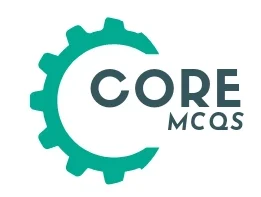12th class (Fsc) Biology unit 2 MCQs
76. What is mortality rate in developing countries due to tetanus?
a. 45%
b. 35%
c. 50%
d. 40%
77. Complete immobilization of muscle leads to:
a. Sever astropy
b. Increase in capillaries
c. Resistance to fatigue
d. Increase in mitochondria
78. Skeletal muscles are called striated (stripped) because of presence of:
a. Alternating dark and light band
b. Red and yellow band
c. Red and black band
d. White and yellow band
79. ……… attach bone to bone and are slightly elastic.
a. Tendons
b. Ligaments
c. Both A & B
d. None
80. Sciatica is characterized by stabbing pain radiating over the course of:
a. Sciatic vein
b. Sciatic artery
c. Sciatic capillary
d. Sciatic nerve
81. A condition in which palatine processes of maxilla and palatine fail to fuse is:
a. Fused palate
b. Microcephlay
c. Osteoarthritis
d. Cleft palate
82. Bowed legs and deformed pelvis are the symptoms of which disease in children?
a. Sciatic
b. Rickets
c. Haematoma
d. Disc slip
83. A disease which causes immobility and fusion of vertebral joint is called:
a. Rickets
b. Sciatic
c. Disc slip
d. Spondylosis
84. Rickets is due to deficiency of vitamin:
a. D
b. A
c. E
d. C
85. Which one of the following is not a joint disease?
a. Disc slip
b. Arthritis
c. Spondylosis
d. Sciatic
86. Acute forms of arthritis usually result from:
a. Fungal invasion
b. Bacteria invasion
c. Severe injury
d. Viral invasion
87. The disease caused by low calcium in blood is called:
a. Sciatic
b. Tetanus
c. Tetany
d. Cramp
88. Which end of muscle remains fixed when the muscle contracts?
a. Tendon
b. Insertion
c. Belly
d. Origin
89. Muscle is connected to bone by:
a. Z-line
b. Tendon
c. Cross bridges
d. Ligaments
90. Thick filament in myofibril is made up of:
a. Tropomyosin
b. Myosin
c. Troponin
d. Actin
91. Slightly elastic connective tissues that attach bone to bone are called:
a. Bracho-radialis
b. Tendons
c. Ligaments
d. Brachialis
92. Muscle present in the gut wall are:
a. Cardiac
b. Smooth
c. Voluntary
d. Skeletal
93. There are ……… muscles in the human body most of which occur in pairs.
a. 660
b. 650
c. 645
d. 630
94. Which of the following muscle straightens the elbow joints:
a. Biceps
b. Branchialis
c. Bracnioradialis
d. Triceps
95. The diameter of skeletal muscle fibres is:
a. 10-120 µm
b. 10-80 µm
c. 10-135 µm
d. 10-100 µm
96. The connective tissue which attaches the bones together is called:
a. Cross bridges
b. Ligament
c. Z-line
d. Tendon
97. The skeleton muscles are attached with the bones though the:
a. Sarcolemma
b. Ligaments
c. Myofibrils
d. Tendons
98. Which animal moves by jet-propulsion?
a. Snail
b. Earthworm
c. Jelly fish
d. Star fish
99. Euglena moves with the help of:
a. Myonemes
b. Cilium
c. Flagellum
d. Pseudopodium
100. The diameter of cilia ranges from:
a. 0.36 to 0.8 µm
b. 0.1 to 0.5 µm
c. 0.3 to 0.8 mm
d. 0.1 to 0.5 mm
101. Which of the following is a plantigrade?
a. Horse
b. Rabbit
c. Carnivore
d. Monkey
102. The mammals who walk on tips of the toes , modified into hooves are termed as:
a. Digtigrades
b. Plantigrades
c. Brachigrades
d. Unguligrades
103. Plantigrade mode of locomotion is observed in:
a. Goat
b. Monkey
c. Rodents
d. Rabbit
104. The supracoracoid muscles provide power for the:
a. Recovery stroke
b. Upward stroke
c. Neutral stroke
d. Downward stroke
105. Most efficient way of supporting the body is seen in:
a. Reptiles
b. Fishes
c. Mammals
d. Aves
106. _ is unguligrade.
a. Rabbit
b. Bear
c. Goat
d. Man
107. The plantigrade animals used to walk on their:
a. Soles
b. Digits
c. Belly
d. Tips of toes
108. Which animal has long narrow wings?
a. Reptiles
b. Gull
c. Mammals
d. Owl
Click here to go directly on chapter no.3
